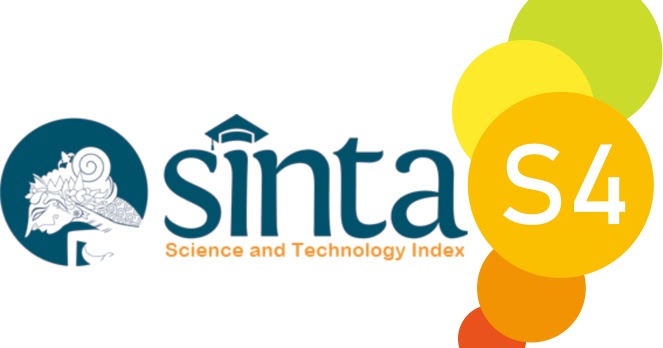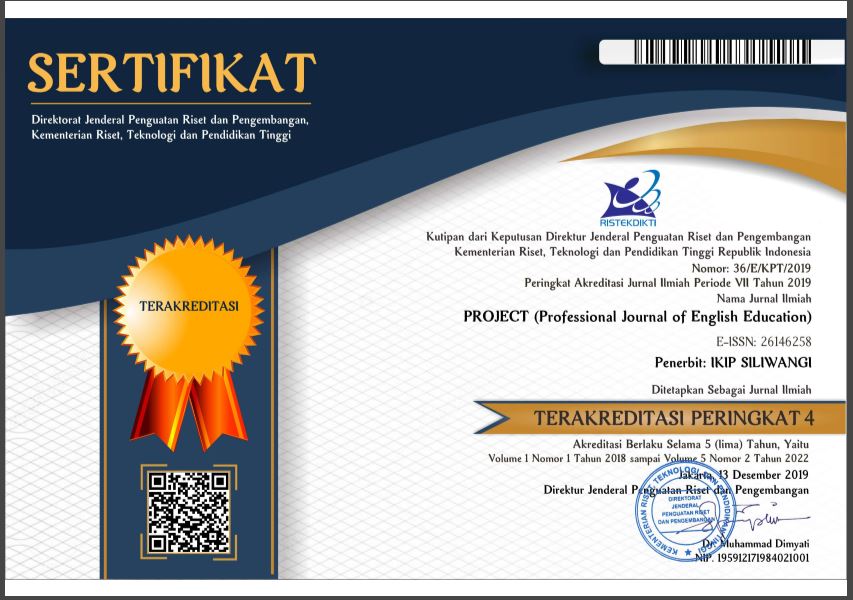RHETORIC AND IDEOLOGY: A CRITICAL DISCOURSE ANALYSIS OF ANIS BASWEDAN’S LECTURING SPEECH AT 2023 ST. LEE LECTURE – CAN DEMOCRACY DELIVER? REFLECTIONS ON THE INDONESIAN CASE
Abstract
The purpose of this study is to explore Anis Baswedan’s ideology manifested in his lecturing speech at St. Lee Lecture delivered on March 6, 2023. The investigation of this study was conducted under Fairclough’s model of Critical Discourse Analysis (CDA). In understanding the ideology, the researchers worked on the microstructure level by employing Aristotle’s rhetoric theory in terms of components and devices. The results of this study revealed that, in related to persuasive elements used to support claims or respond to arguments, there are three components used, i.e., logos (50%), ethos (30%), and pathos (20%). In terms of conveying information, there are three devices employed, i.e., anaphora (50%), epistrophe (30%), and conduplicatio (20%). The analysis of rhetoric finally led to the findings of Baswedan’s ideology perspective towards the issues of emphasis on democratic accountability, challenges in democratic processes, reform focus, integration of political and bureaucratic processes, technocratic approach & delivery units, public-centered approach, infrastructure development for public welfare, negotiation & collaboration, and evaluation & adaptation.
References
Al-Azzawi, Q. O., & Nashaat, O. O. (2021). RHETORICAL ANALYSIS OF TRUMP’S SELECTED TWEETS. PalArch's Journal of Archaeology of Egypt/Egyptology, 18(4), 493-506.
Ardiansyah, M. F. (2017). Analisis retorika basuki tjahaja purnama dalam kampanye rakyat pemilihan kepala daerah khusus ibukota jakarta di rumah lembang 2017 (kajian retorika aristoteles) (Doctoral dissertation, State University of Surabaya).
Aristotle's Art of rhetoric. University of Chicago Press, 2019.
Ariyanti, A., Sudar, S., & Tusino, T. (2022). A Rhetorical Analysis of RM's Speech at the United Nations General Assembly and Its Application in Teaching Speaking. Scripta: English Department Journal, 9(2).
Creswell, J. W. (2016). Research design: pendekatan metode kualitatif, kuantitatif, dan campuran. Yogyakarta: Pustaka Pelajar, 5.
Fairclough, Norman. (1989). Language and Power. London: Longman Inc.
Fairclough, Norman (1995). Critical Discourse Analysis: The Critical Study of Language. Longman. ISBN 978-0582219847.
Fairclough, Norman. (1998). Discourse and Social Change. Cambridge: Polity Press.
Fairclough, Norman. (2015). Language and Power. Cet. 10; New York: Longman Inc.
Fanani, A., Setiawan, S., Purwati, O., Maisarah, M., & Qoyyimah, U. (2020). Donald Trump’s grammar of persuasion in his speech. Heliyon, 6(1).
Fatkhiyati, N. R., & Suharno, S. (2019). Rhetorical strategy and linguistics features in e-petition through Change. org. Lingua Cultura, 13(4), 239-245.
Gunawan, R. H., & Amrullah, A. (2019). Rhetorical metaphor in Barrack Obama speech family. International Journal of Multicultural and Multireligious Understanding, 6(2), 817-822.
Harris, R. (1997). A handbook of rhetorical devices.
Herrick, J. A. (2020). The history and theory of rhetoric: An introduction. Routledge.
Isai, K. I. A., Lin, T. M., Ching, H. S., Selvajothi, R., & Maruthai, E. (2020). Using rhetorical approach of ethos, pathos and logos by Malaysian engineering students in persuasive email writings. Malaysian Journal of Social Sciences and Humanities (MJSSH), 5(4), 19-33.
Levitsky, S., & Ziblatt, D. (2019). How democracies die. Crown.
Suciati, D., & Ambarini, R. (2018). A Rhetorical Analysis of Selected Speeches of Indonesian Woman Politicians: Pre-Electoral Strategies. Advanced Science Letters, 24(6), 4541-4545.
Taping, M. G., Juniardi, Y., & Utomo, D. W. (2017). Rhetorical devices in Hillary Clinton concession speech. Journal of English Language Studies, 2(2).
Downloads
Published
Issue
Section
License

This work is licensed under a Creative Commons Attribution-ShareAlike 4.0 International License.




